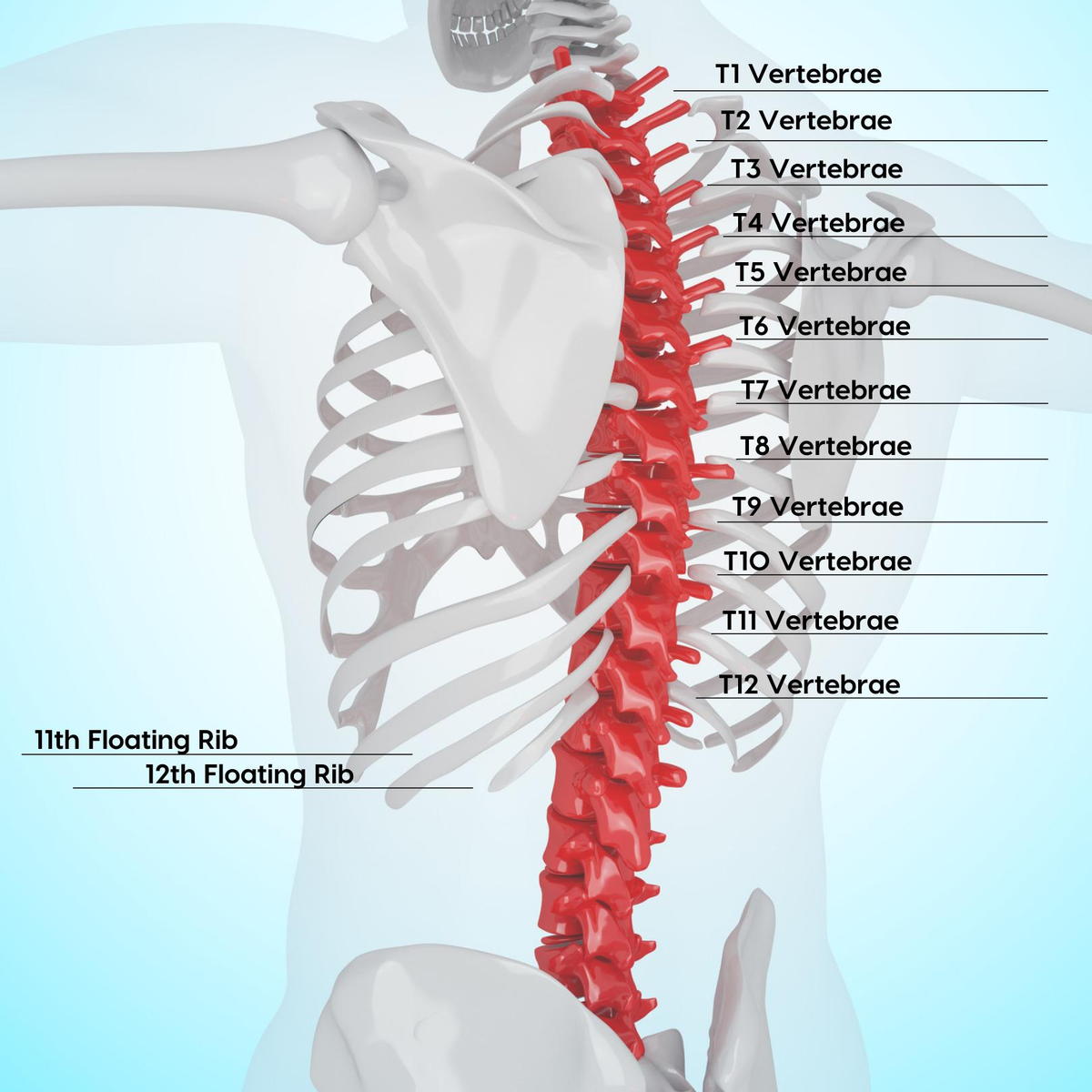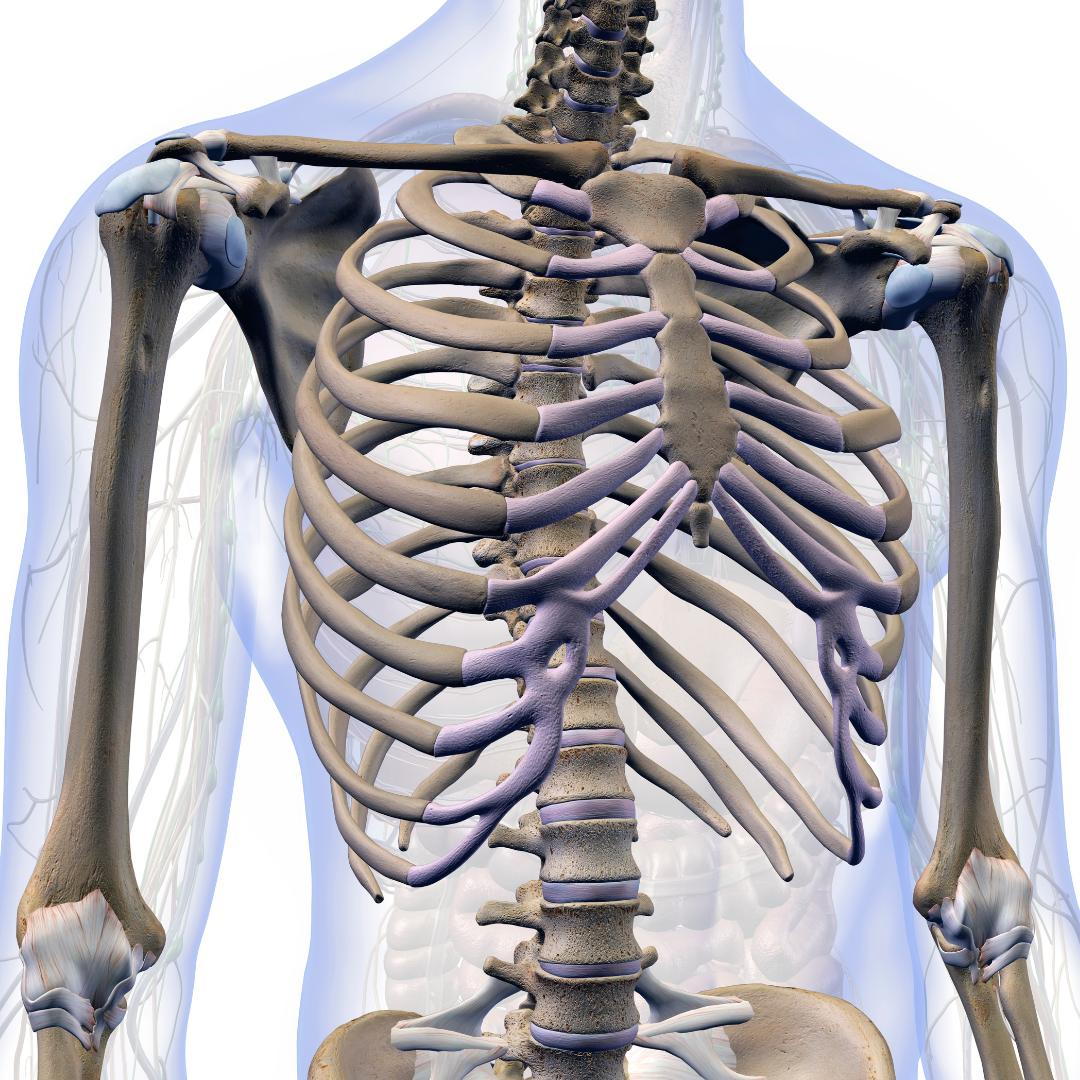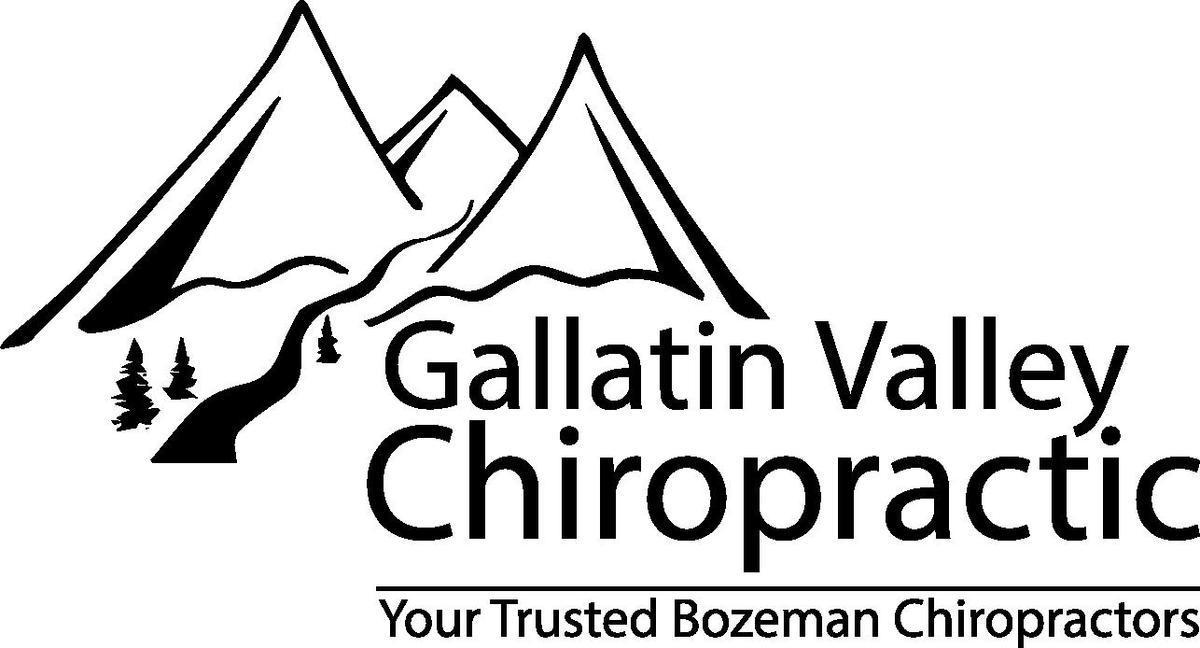Thoracic Spine Nerves and Subluxation
posted: Jul. 05, 2013.

Thoracic Spine Nerves
The thoracic spine consists of twelve vertebrae knows as T1,T2,T3...T12. These vertebrae extend from the base of the neck (T1) to the mid to lower back also known as the thoracolumbar junction (where T12 and the lumbar spine meet). The ribs connect to each of the thoracic spine vertebrae and help protect many vital organs. If the thoracic spine is not aligned properly, it could cause many different unwanted symptoms other than just pain. Listed below are the vertebrae in the thoracic spine and some organs and conditions each segment might affect when subluxation (misalignment) occur.
T1
- The first and top most vertebrae in the thoracic spine. The nerves from T1 innervate the arms, elbows, hands and fingers. When misaligned, this can cause pain, numbness, and soreness down the shoulder and into the arm and hands. It also innervates the muscles of the hand and allows the fingers to abduct or "fan out" away from each other.
T2
- The nerves from T2 innervate and affect the heart, coronary arteries, and chest area. When the T2 vertebrae is misaligned, this can cause chest pains, tightness, heart burn, and soreness in the upper back.

T3
- The third vertebrae is an important segment to respiration, affecting the lungs and bronchial tubes. This can cause a lot of breathing related issues such as asthma and COPD, and can also cause tightening of the chest to be a symptoms when misaligned.
T4
- Misalignment of T4 can cause what is called T4 syndrome, resulting in symptoms such as numbness and tingling in the hands. It is very important for digestion as well, with the nerves innervating the gallbladder and common duct. This can inhibit how your digestive system breaks down fats. This can cause stomach pain, and result in changes in stool.
T5
- The fifth vertebrae can affect the Liver and solar plexus. The liver has a number of functions that can be inhibited with misalignment including filtration, metabolizing and absorption of nutrients.
T6
- The middle most vertebrae can affect the stomach and the mid back area. Misalignment of the sixth vertebrae is often found in patients who suffer from heartburn.
T7
- T7 can affect the pancreas and duodenum, decreasing the bodies ability to stabilize blood glucose levels and break down fats, sugars and starches.
T8
- Misalignment of T8 affects the spleen, decreasing the bodies ability to filter blood and fight off infection, misalignment can also promote pain in the lower and midback.
T9
- Feeling stressed? Misalignment of the ninth vertebrae can affect the Adrenal Glands, which are responsible for regulating stress, blood pressure and the immune system. This can cause increased feeling of stress and a weakened immune system.
T10
- T10 affect the kidneys, leading to issues such as nephritis, pyelitis and atherosclerosis and can even lead to increased fatigue.

T11
- The 11th vertebrae can affect the ureters, which can result in control issues of the bowels as well as lower thoracic and rib pain. The 11th rib also attaches to the T11 vertebrae and is the first floating rib of the spine, meaning that the rib attaches to the back at the vertebrae but not in the front like the first 10 ribs.
T12
- The lowest of the thoracic spine, marks the beginning of the transition to the lumbar spine forming the thoracolumbar junction. Misalignment of T12 affects the small intestines, resulting in digestive issues and pain in the lower and upper back. This is also a floating rib and false rib like T11 and does not have joint articulation in the front of the chest.
Misalignment and Thoracic Nerves
Misalignment in the thoracic region of the spine can affect many of the bodies organs, including the stomach the gallbladder, liver, pancreas, spleen, adrenal glands, kidneys, colon and uterus. Decreased nerve innervation to these organs may cause discomfort, indigestion, and stomach problems when misaligned. Adjustment to this area can help improve organ function and even positively effect immunity and resistance to infection.
Subluxations (misalignments) can also effect the cervical spine (neck), check out our article to learn more about Cervical Spine Nerves and how they are managed at the Gallatin Valley Chiropractic clinic. If you want to learn more about the lower back subluxations and how they can affect the Lumbar Spine Nerves Click here!
Call us: 406-551-2177

Schedule online at: https://appointments.mychirotouch.com/?clinic=GVCL0001